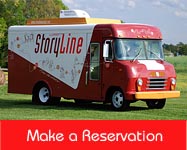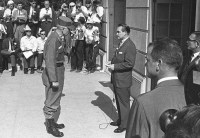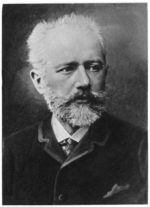The Indies Are Back!
I’m winding up a two-month promotional tour for my new novel with some really good news: independent booksellers are back.
Everywhere I went on my 20-city tour, I found independent book stores that are thriving; owners who possess that essential combination of a love of books and good business sense; staff who are knowledgeable and enthusiastic and helpful. It’s a dramatic reversal of a 20-year trend, and for midlist writers like me who depend on word-of-mouth to sell books, it’s the best news in years.
Here’s an example of what’s happening in a good-sized city I’m very familiar with: fifteen years ago there were perhaps a dozen independent bookstores of various stripes scattered about town, some of them doing well, others gamely muddling along, showing slim profits but having lots of fun in a business they loved. Today, there is one full-service, general-purpose independent bookstore in this city.
What happened was the double-barreled onslaught of chain bookstores and Amazon. Within a ten-mile radius of this one surviving independent, there were suddenly four big chain stores – offering a huge selection and bestsellers at loss-leader prices, cheaper than the independents could buy them. Customers the independents thought were fiercely loyal bolted for the chains and their discount prices. The bottom fell out of the independents’ business and one by one they agonizingly gave up – all but this one store, which struggled mightily but held on by its fingernails.
Today, the landscape is profoundly different. One of the chains went belly-up. Two more closed their stores in the area of the city where the independent survived. The last remaining chain is, in many parts of the country, closing stores and reducing inventories. And many of the customers who shopped the chain stores are turning back to the independents, re-discovering what made them once-loyal customers. That surviving independent in this city is seeing double-digit increases in sales from a year ago. Life is good and getting better.
Independents still face an uphill battle. There is stiff competition from the remaining chain operations. Online booksellers offer books at discount prices. And there is the steady and continuing movement to e-book formats, especially for fiction titles. Kindle, Nook and Kobo have taken a big cut of that market. But there are still huge numbers of people who insist on holding a real, physical book in their hands, and they are the core of the independents’ audience.
If you go into an independent bookstore and ask, “What do you have that’s good to read?” the staff will give you an informed suggestion, based on what they know about you as an individual reader. If you’re looking for a book on a particular subject, the staff will help you find what fits your needs, and if it’s not on their shelves, they’ll have it for you in a couple of days. If you want to spend an hour just browsing, soaking up the smell and feel of books while you have a cup of coffee and a muffin, you’ll find it a comfortable, inviting place. If you want to meet one of your favorite authors peddling his or her new book, you’re likely to find them at an independent. It’s old-fashioned customer service, married to modern technology and store owners with a keen sense of what makes a successful business.
What’s happening these days with independent bookselling is a nationwide phenomenon, as noted by Fortune Magazine in a recent article: “The Indie Bookstore Resurgence.” Author Verne Kopytoff noted that sales at independents grew 8% last year and are on track to do as well this year. And membership in the American Booksellers Association is up 16% over the past five years.
Independents’ competition won’t go away, nor should it. People who buy books and related items want choice, convenience, a good deal. But for the moment, that immensely important part of the book culture that independent stores inhabit is the healthiest in years, and getting more so. And the folks who are happiest about that (after the owners themselves) are scribblers like me.
























